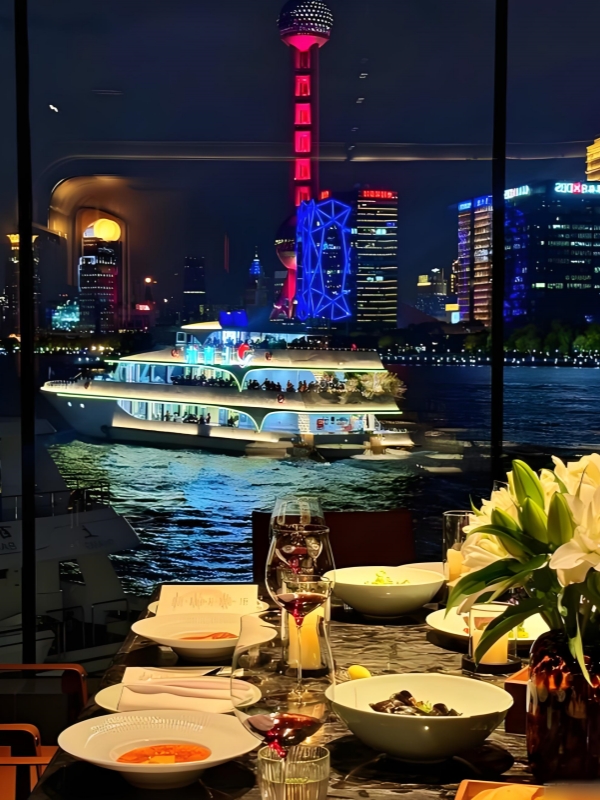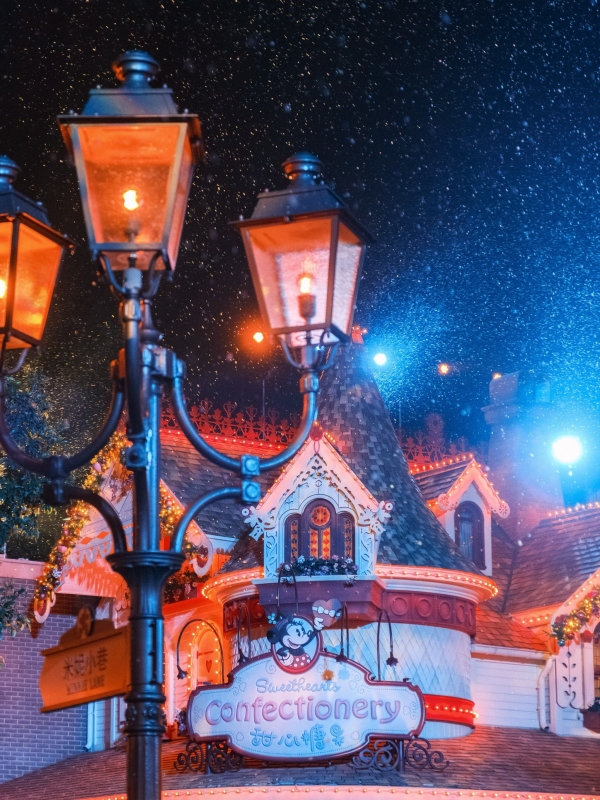So, you’ve booked your flight to Shanghai—but now comes the big decision: where to stay in Shanghai without ending up far from the food, sights, or real city vibe? It’s not just about price. The right neighborhood can make or break your trip—think morning walks under plane trees vs. highway noise at 6 a.m.
This guide pulls together real traveler stories, a few regrets, and places people actually loved. If you’re still planning your full itinerary, check out our main Shanghai travel guide for local tips, Maybe it can help you. Now, let’s help you pick the right spot to sleep.
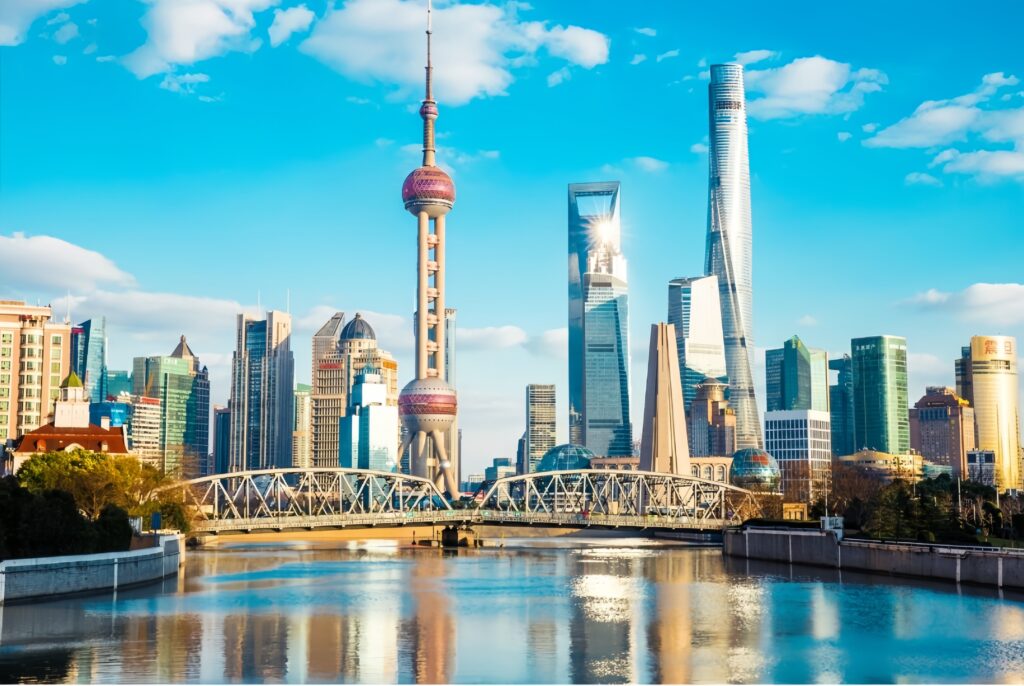
Shanghai Oriental Pearl Tower
Why Is Picking the Right Place to Stay in Shanghai So Important?
Is Shanghai too big for one neighborhood to fit all?
Shanghai isn’t just big—it’s layered, messy, and beautifully contradictory. Think New York meets Tokyo with a touch of ancient mythology. The wrong neighborhood here doesn’t just mean a longer commute—it might mean missing out entirely. Where to stay in Shanghai isn’t just a line in your booking confirmation—it shapes your whole trip. I once stayed near Shanghai Railway Station because it “looked central”—big mistake. It was loud, dusty, and weirdly empty at night. You want to be where the city hums, not where the buses sleep.
Every part of Shanghai gives you a different slice of the city. The Bund? Glamorous but touristy. French Concession? Chill cafés, leafy streets, and a whole lot of expats who came and never left. Pudong? Feels like the future—if the future was built by an architecture student on steroids. The point is, don’t assume one area fits all. It really doesn’t. You could be one subway stop away and feel like you're in a different country.
And here’s the kicker: Shanghai hotels that accept foreigners aren’t evenly spread. Some budget-friendly areas don’t have legal options for non-Chinese passports. So yeah, you’ll want to check that before clicking “book.” This city rewards those who do their homework—and punishes the lazy ones with 45-minute taxi rides at midnight. That was me once. Never again.
What’s the difference between tourist zones and livable areas?
It’s tempting to stay right next to the Bund or East Nanjing Road. But ask someone who’s lived here a while, and they’ll say: too flashy, too loud, too fake. The real Shanghai unfolds in the backstreets of Jingan, the book cafés on Changle Road, or the nighttime noodle stalls in Hongkou. Tourist zones give you the “brochure version.” Livable areas? That’s where the heart is. And ironically, it’s where you’ll often sleep better, eat better, and probably spend less.
I remember a couple from Berlin I met at a bookstore bar in Fuxing Park—they’d moved their hotel halfway through the trip because they couldn’t stand the noise near People’s Square. After relocating to a quiet lane near Wukang Road, they said it felt like they “finally arrived.” That says a lot. Where to stay in Shanghai isn’t just about walking distance to attractions—it’s about where you feel like you’re part of the city, not just peeking in.
There’s also a budget logic. Livable neighborhoods often have cheaper, better food (no tourist tax), more relaxing walking routes, and are just a few metro stops from everything else. And almost every metro station now has English signage, so getting around won’t be an issue even if you can’t speak a word of Chinese. That ease makes staying outside the tourist core not just viable—but smarter.
Can where you stay affect your budget or comfort?
Absolutely. And not in the way most travel blogs make it sound. It’s not just “5-star vs. hostel.” It’s also: Are you walking 200 meters to the subway or 1.2 kilometers? Are there convenience stores open past midnight nearby? Are hotel staff used to helping foreigners—or do they pretend you don’t exist?
One time I stayed near Hongqiao Station because it was close to the airport—big mistake again. The hotel was decent, but the area was dead by 8 p.m., and finding a place for breakfast that didn’t involve instant noodles? Nearly impossible. Where to stay in Shanghai means thinking about your daily rhythm, not just your bed. Want a morning coffee without hunting? Stay near Jingan Temple or Dapuqiao. Want views? Get a riverside spot in Pudong, but know you’re trading charm for skyline.
Here’s a rough idea for budget expectations:
| Area | Average Nightly Cost | Foreigner-Friendly Hotels | Vibe |
|---|---|---|---|
| The Bund | ¥800–1500 | Yes | Tourist-heavy, great views |
| Jingan | ¥500–1000 | Yes | Stylish, walkable |
| French Concession | ¥600–1200 | Yes | Quiet, leafy, café culture |
| Pudong near Lujiazui | ¥700–1400 | Yes | Futuristic, business zone |
| Hongkou | ¥400–800 | Some | Local vibe, historical |
Bottom line? Your hotel isn’t just a place to crash. It affects how tired, happy, and grounded you feel each day. And in Shanghai, that difference matters more than you think.
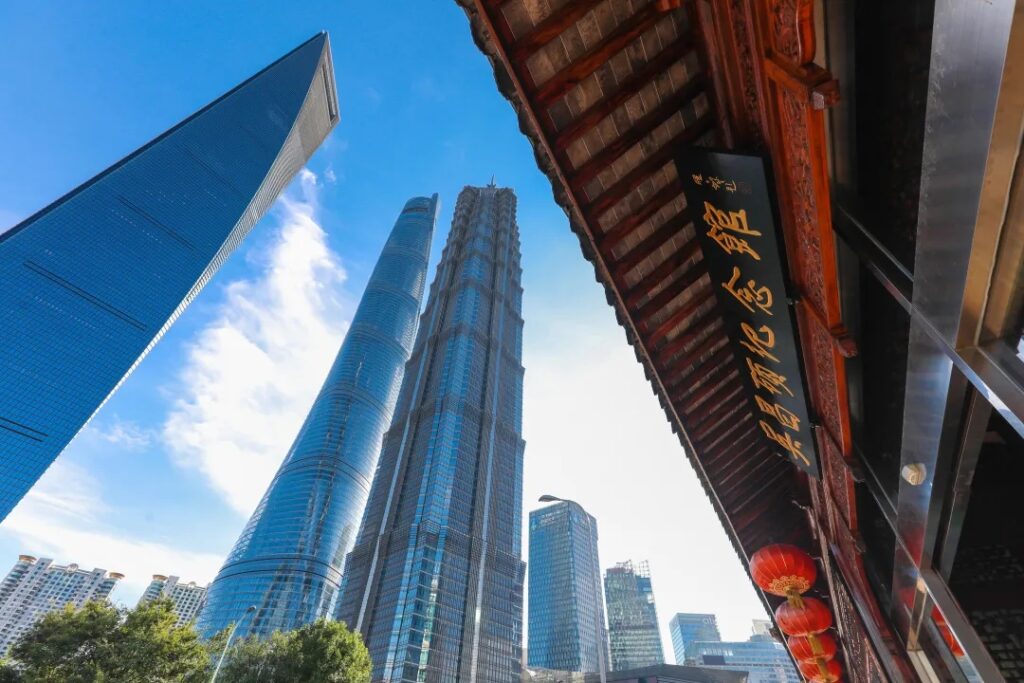
Lujiazui
Which Neighborhoods in Shanghai Offer the Best Balance of Convenience and Character?
Should you stay in the French Concession if you love café culture?
If café-hopping is part of your travel ritual, the French Concession might feel like home. It's leafy, slow-paced, and full of old villas turned into brunch spots. It’s not some postcard version of China—but that’s kind of the point. Think Paris if it had dumplings. Where to stay in Shanghai often gets boiled down to “central vs. scenic,” but this neighborhood is both—just in a quieter, subtler way.
You’ll find coffee shops with pour-over menus longer than dinner lists, record stores tucked in lanes, and elderly folks playing cards under plane trees. It’s a vibe. And here’s the kicker: it’s still central. You're a short hop from Xintiandi, Jing’an, even People's Square. And most hotels here do accept foreign passports, especially boutique ones housed in renovated shikumen buildings. Those are Shanghai’s traditional stone-gate homes—staying in one feels like sleeping inside a living museum.
Now, it’s not the cheapest option. Expect around ¥600–1200 per night for anything comfortable, but you’re paying for more than location—you’re buying charm, walkability, and that rare feeling of “I could stay here forever.” If you’re the kind of traveler who’d rather browse books and sip espresso than chase TikTok-famous photo ops, this might just be your spot.
Is Jing’an worth the hype?
Short answer? Yes. Longer answer? It’s probably the best compromise you’ll find between modern convenience and actual character. Jing’an feels like Shanghai on a good hair day. Big-name hotels? Check. Rooftop bars? Plenty. Local noodle stalls open at 2 a.m.? Absolutely. It’s where CEOs and college students bump elbows—and somehow it works.
Jing’an’s location is ridiculously central, and the metro lines (especially Line 2 and Line 7) shoot you straight to Pudong, the Bund, or Hongqiao. And you don’t have to sacrifice style for that convenience. Streets like Wuding Road or Yanping Road are full of cocktail bars, izakayas, and late-night creperies—yes, seriously. Most hotels here range from ¥500 to ¥1000, and the good news is that many are registered to host foreigners (always double-check, but names like URBN, Campanile, and Swissôtel are safe bets).
If you’re unsure where to stay in Shanghai and want it all—modern, accessible, and still a bit artsy—Jing’an is your middle ground. It doesn’t scream at you. It leans in and says, “Welcome. You’ll be fine here.”
What about Hongkou and the local side of history?
Hongkou doesn’t get much love in glossy travel blogs, but that’s precisely why you should consider it. This is where Shanghai slows down and tells you a story—not in English, maybe, but in the shape of old alleys, Mahjong tiles, and the faint smell of scallion oil noodles. Where to stay in Shanghai isn’t always about picture-perfect—it’s about real texture, and Hongkou has plenty.
Historically, Hongkou was the wartime Jewish refuge, the place where famous writers like Lu Xun once lived. You can still visit Lu Xun Park, or the former Shanghai Jewish Refugee Museum (entry ¥40), both of which now include English explanations and are on major bus and metro routes. The area near Duolun Road has a semi-bohemian feel, without trying too hard. Boutique stays here are growing, with a few accepting foreign passports, especially near Dalian Road and Sichuan North Road stations.
Cost-wise, it’s friendlier than the “cool” districts—expect to pay ¥400–800 per night. You won’t get Instagram-famous views, but you might get invited by a neighbor to try homemade baijiu. That’s the kind of story you remember long after the skyline fades.

Shanghai Jing'an District
Are There Good Hotel Picks for Different Budgets and Travel Styles?
What are some budget hotels that are actually clean and foreigner-friendly?
If you're hunting for a clean, foreigner-legal budget stay in Shanghai, don’t just look for the cheapest one on Booking or Agoda. Trust me—some sub-¥300 options might look tempting but either don’t accept foreign passports or feel more like dorms than hotels. A smarter move? Look for smaller chain hotels with international registration, like Hanting Premium (汉庭优佳), Campanile (康铂), or Jinjiang Metropolo (锦江都城).
These hotels are typically priced at ¥300–500 per night, located near metro stations, and have English-speaking staff at the front desk—or at least a translation app handy. Rooms are compact but spotless, and WiFi usually works well. If you’re staying near People’s Square or the Bund, Campanile on Jiujiang Road is a solid pick. Further out, Metropolo in Changning District is quiet but close to Line 2, ideal if you’re heading to Hongqiao or Pudong Airport.
You won’t get hand-stitched bathrobes or skyline views, but you’ll sleep well and won’t get turned away at check-in. If you’ve ever wandered into a “hotel” that turns out to be someone’s fourth-floor apartment, you’ll understand why having a legal, consistent chain matters in Shanghai.
What’s a good mid-range stay if you want comfort and style?
Mid-range in Shanghai is a sweet spot, especially around ¥600–1000 per night. You’re not slumming it, but you’re also not paying ¥3000 for a night. This range gives you better beds, good showers, and often a bit of personality. For travelers wondering where to stay in Shanghai with balance in mind, this is your go-to range.
A few favorites? URBN Boutique Hotel in Jing’an—eco-conscious, full of warm wood interiors, and yes, they take foreign guests. Or try SSAaw Boutique Hotel near the French Concession. They’re not part of massive chains, but that’s the charm. They offer something more intimate—staff will actually remember your face.
Location is the other win. Most mid-range hotels in this bracket are within walking distance of metro lines and food streets. Breakfast isn’t always included, but you’re steps away from local cafés anyway. If you want style without pretension, and convenience without crowds, you’ll feel right at home.
Are luxury hotels in Shanghai worth it?
Luxury in Shanghai hits differently. It’s not just about pillow menus and marble tubs—it’s about skyline views over the Bund, Michelin-starred restaurants downstairs, and that unmistakable “you’ve made it” feeling. If your budget stretches to ¥1500–3000 per night, you’ll get treated like royalty.
Top picks? The Peninsula Shanghai sits right at the river’s edge with unbeatable views and service that feels invisible until you need it. Amanyangyun, tucked near Minhang’s ancient camphor forest, blends luxury with heritage—it even has Ming Dynasty brickwork in its villas. And if you’re more into skyscrapers, Park Hyatt in Pudong lets you sip cocktails 87 floors above the city.
All of these are fully licensed for foreign travelers, and you’ll find English concierge, airport pickup, and even help booking train tickets or museum tours. So, is it worth it? If you’re in town for a honeymoon, business deal, or just feel like spoiling yourself—absolutely. Sometimes, it’s not about the bed. It’s about waking up and thinking, “So this is what Shanghai can really feel like.”
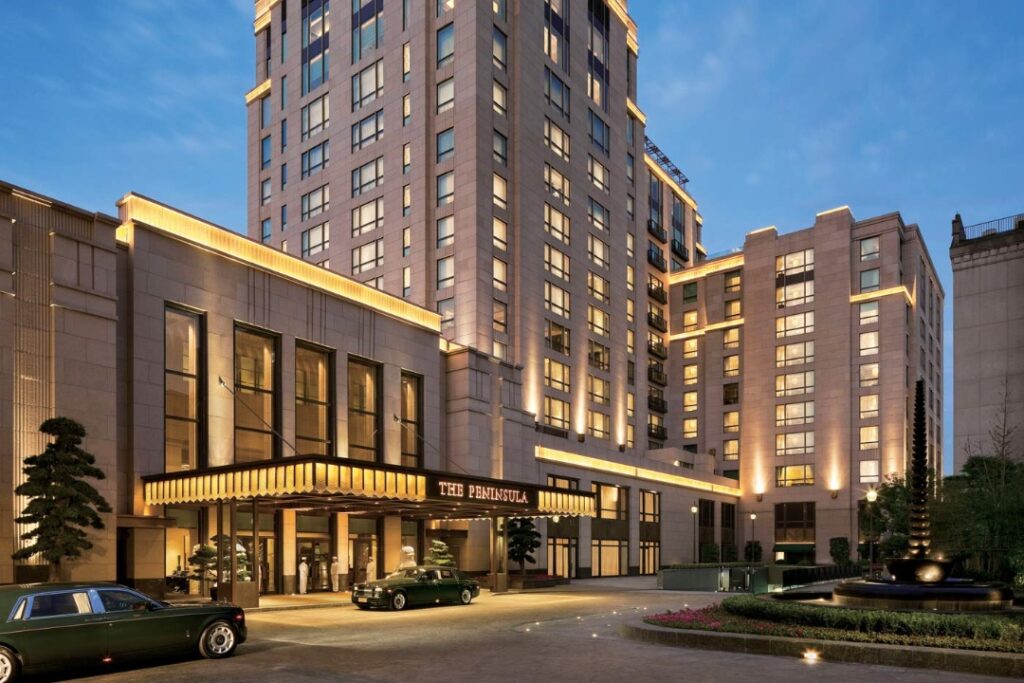
The Peninsula Shanghai
Is It Better to Stay on the Puxi Side or in Pudong?
What’s the vibe difference between the two?
Here’s where where to stay in Shanghai gets a little tricky. Shanghai is sliced by the Huangpu River into two massive zones: Puxi (west of the river) and Pudong (east of the river). Both are technically central, both have subways everywhere, and both are wildly different in vibe.
Puxi is where the “old soul” of Shanghai lives. Think of it like Manhattan below Central Park—compact, stylish, loud in a charming way. Streets wind through French Concession villas, noodle stalls, and bookshops. It’s where you’ll find the Bund, Jing’an Temple, and all those night markets that smell like grilled garlic and sugar.
Pudong, on the other hand, feels like Singapore and Dubai had a Shanghai baby. Wide avenues. Massive malls. Gigantic skyscrapers like the Shanghai Tower. It’s neater, newer, and frankly, less chaotic. Business travelers and families love it for the space, cleanliness, and international hotels with pool decks and skyline views. If you’re a sucker for high-rise living and hate street noise, Pudong will feel like peace.
So—soul or skyline? That’s really the question. And it’s fine if your answer changes after a few nights.
Can you easily get from one to the other?
You’d think the river would separate two different worlds, but actually, it’s surprisingly painless to cross. Metro Line 2 zips under the Huangpu River and links both sides in under 10 minutes. There are also ferries, tunnels, and even the glass bubble-like Bund Sightseeing Tunnel, though that last one’s more of a gimmick (¥50, kind of fun once).
For most travelers figuring out where to stay in Shanghai, the ability to hop between Pudong and Puxi matters more than you’d expect. Say you’re staying in Pudong near Lujiazui, but want to do nightlife or café-hopping in the French Concession—no problem. Taxis are cheap (flag down fare around ¥16), and Didi works well with foreign credit cards now.
The one thing to watch out for? During rush hours, the metro can feel like a sardine can. If you're dragging luggage, try to avoid 8–9am and 5–6:30pm. But in general, the city’s infrastructure makes both sides totally accessible. You’re not “locked in” wherever you book.
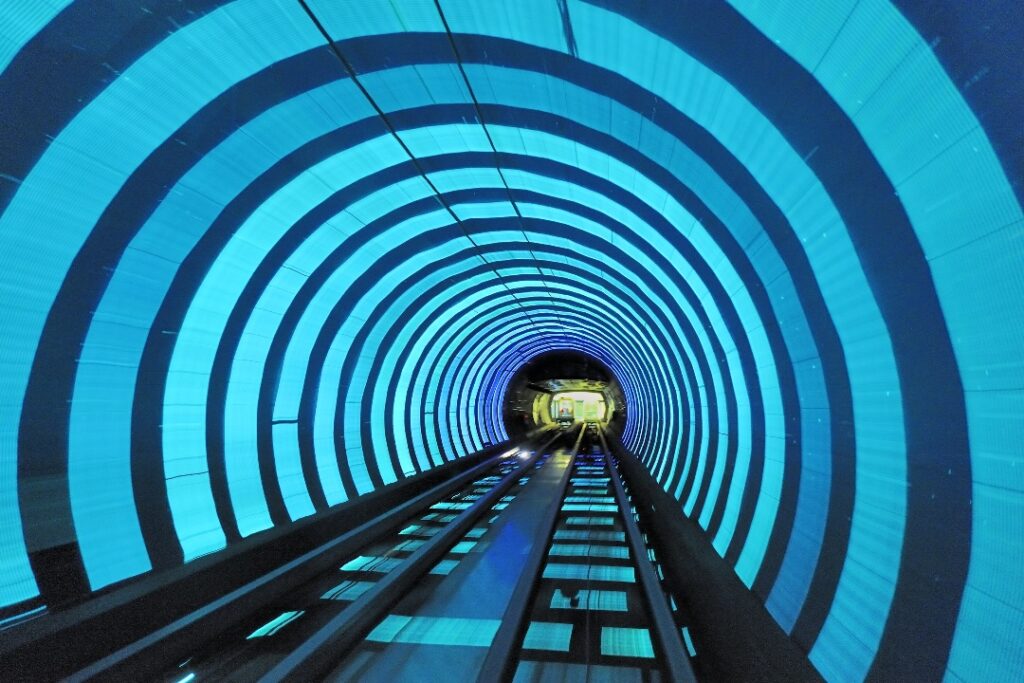
The Bund Sightseeing Tunnel
Can You Stay Somewhere Unique—Not Just Another Chain Hotel?
Are boutique hotels or renovated shikumen better for cultural travelers?
Let’s be honest—most people googling where to stay in Shanghai get flooded with Hilton, Marriott, and other chain hotels. But if you want something with actual personality, Shanghai has more to offer than just glass boxes with concierge desks.
Take boutique hotels. Some are built inside restored shikumen, those grey-brick lane houses that blend Western and Chinese design. Staying in one feels like being inside a Wong Kar-wai movie—narrow staircases, creaky floors, a terrace that smells like jasmine. Places like Cachet Boutique in Jing’an or Quintet in the French Concession offer real cultural immersion, not just themed wallpaper. They're cozy, stylish, and foreigner-friendly (staff speak English, by the way).
But boutique doesn’t always mean expensive. Many start around ¥500–¥700 per night, especially in non-peak seasons. You get charm, a real neighborhood, and better morning walks than any five-star tower. Just double-check on booking platforms like Ctrip whether they’re licensed for foreign guests, as not all small inns are.
And if you’re into history? A stay in shikumen might give you more Shanghai than a skyline view ever could.
Can you find artistic stays or cultural immersion in guesthouses?
Absolutely—though they don’t always show up on top hotel lists. Some of the best where to stay in Shanghai options for creative travelers hide in the backstreets. Look for art-themed guesthouses in places like Xintiandi, or renovated studios in Hongkou where the furniture looks like something from a 1930s film set.
One standout is The Drama, a Shakespeare-themed hotel near the West Nanjing Road station. It’s campy in the best way: velvet curtains, old scripts on the wall, even the room service menu reads like a sonnet. Another is CITIC Pacific Zhujiajiao Jinjiang Hotel, located inside a water town and styled like a scholar’s residence.
These places aren’t just beds—they’re part of your trip story. Morning tea on a patio, talking to the owner about Chinese opera, reading a dusty English novel under a bamboo lamp—it’s the kind of vibe you’ll remember way more than an infinity pool.
Prices vary—guesthouses can be as low as ¥300 per night, boutique ones maybe ¥800–¥1000, but the value? Immense. Just be sure they’re listed on platforms like Trip.com or Agoda and note if they clearly say “accept foreign guests.”
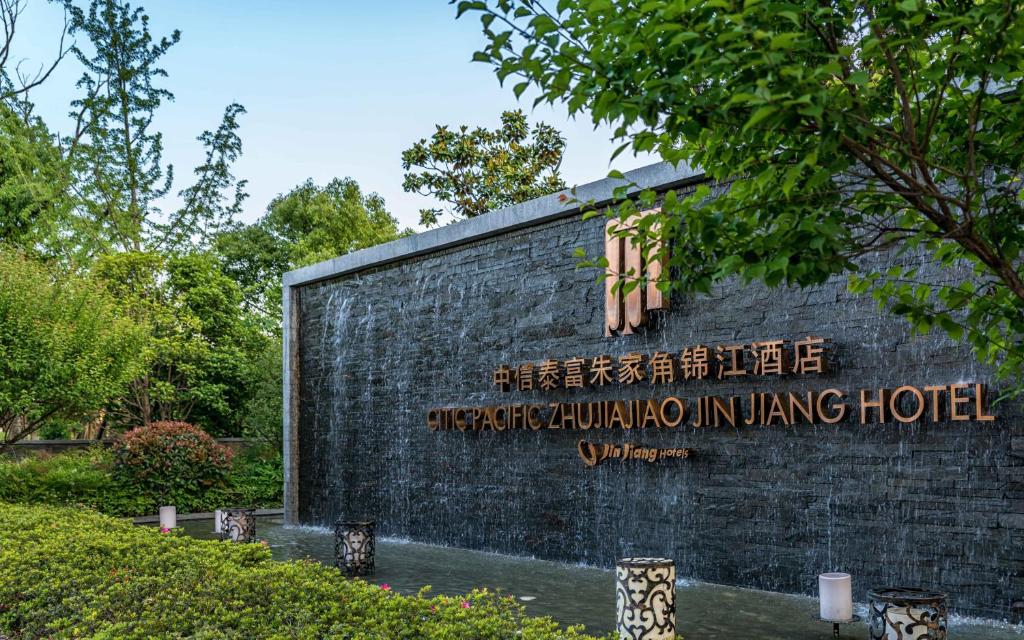
CITIC Pacific Zhujiajiao Jinjiang Hotel
What Do Real Travelers Say About Where They Stayed?
“Our lane house near Wukang Road was the best part of our trip.”
Some things don’t show up on hotel listings. Like how it feels to slide open a creaky wooden door and step into a courtyard filled with drying laundry, flower pots, and the smell of steamed buns from downstairs. That’s what a couple from Sydney wrote after spending five nights in a renovated shikumen near Wukang Road, deep in the French Concession.
They said it wasn’t the most polished place—there was no elevator, the Wi-Fi hiccupped at night, and they once heard a neighbor playing erhu. But those “flaws” made it feel real. “It felt like we were part of the neighborhood, not just passing through,” they wrote. And they were only a 10-minute walk from Fuxing Park and Yongkang Road, two classic spots for morning tai chi and late-night drinks.
If you're searching where to stay in Shanghai that isn’t another sterile box, sometimes these reviews say more than any guidebook. They stuck around in the neighborhood just long enough to feel like locals. That’s the kind of memory a hotel chain can’t give you.
“I booked a hotel near the Bund—but I barely slept.”
On the flip side, another traveler—this one from London—shared a less romantic tale. She booked what she thought was a prime spot: a hotel just two blocks from the Bund, in Huangpu District. Sounded perfect for sightseeing, right?
Wrong. Turns out the street below hosted a late-night square dancing group, plus a few bars that didn’t close until 2 a.m. Her room faced the road, and the windows were paper-thin. “I watched the sunrise, not by choice,” she joked.
This kind of review shows why where to stay in Shanghai isn’t just about location on the map. Tourist zones may look central, but comfort and sleep quality matter. She eventually asked the hotel to move her to a higher floor and got some rest—but she warned others: check noise levels and reviews before booking, especially if you're a light sleeper.
“We stayed in Pudong with kids—it was easy and clean.”
One family from Vancouver had a totally different take. They chose a mid-range hotel in Pudong, not far from Century Park. They weren’t after nightlife or heritage—they just wanted a clean place, close to a metro, with a playground nearby.
And that’s what they got. They praised the easy subway access (Line 2), the spacious hotel lobby, and the bilingual staff who helped them order food via QR code. Even though they were across the river from “historic Shanghai,” they felt zero FOMO. “We had space, quiet, and could see the skyline from our window,” they said.
If you’re a family figuring out where to stay in Shanghai, this kind of story hits home. Not every trip is about temples and bars—sometimes, you just want clean sheets, helpful staff, and somewhere the kids can nap.
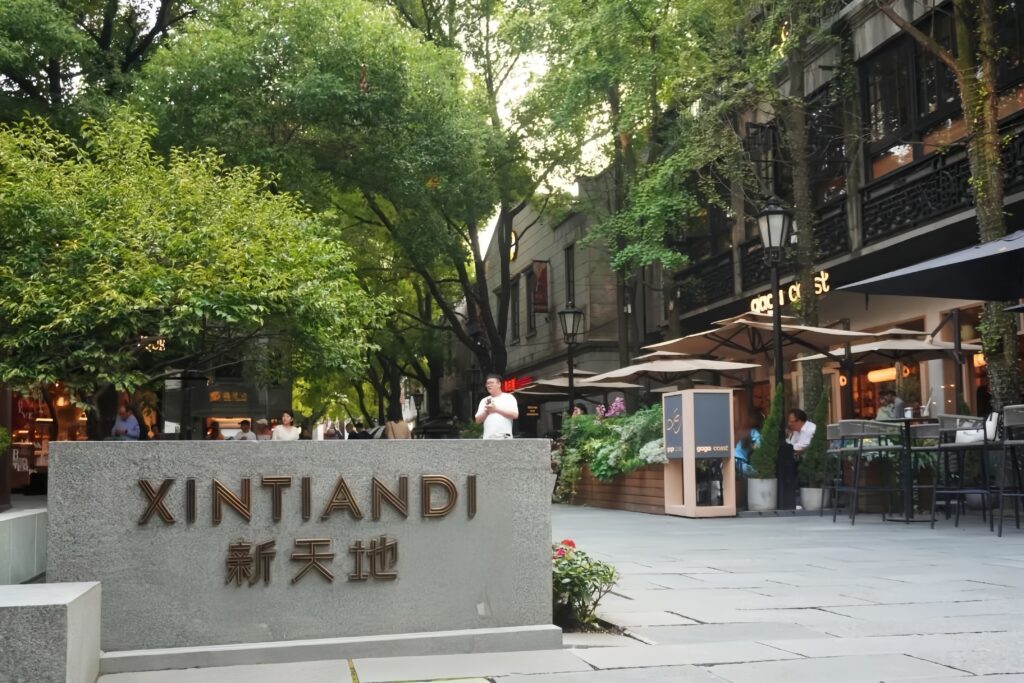
Shikumen
What If You're Staying Long-Term or Working Remotely?
Are there good short-term rentals or co-living spaces in Shanghai?
If you’re googling “where to stay in Shanghai” and your trip is more like three months than three days, you’re in a different game. Traditional hotels won’t cut it. You need a place that lets you cook, leave your stuff out, and maybe even make friends. That’s where short-term apartments or co-living spaces like Node, Mofang, or Livia come in.
In neighborhoods like Jing’an, Xuhui, or even Changning, these rentals feel more like someone’s home than a serviced unit. You get a kitchenette, maybe a balcony, and usually English-speaking staff who won’t blink at your passport. Most of them are fully licensed to host foreigners—you can ask upfront or check platforms like Trip.com, Ziroom (自如), or Airbnb (still working in Shanghai, but with fewer listings than before).
The price range? Expect to pay around 5,000 to 10,000 RMB/month for a central location with decent amenities. It might sound steep, but if you’re splitting with a partner or working from “home,” the comfort goes a long way.
Is Shanghai remote-work friendly?
Here’s the thing: working remotely in Shanghai sounds exciting, but you’ve got to plan it right. First off, internet speed is fine, but many foreign websites (Google Docs, Slack, Gmail) require a reliable VPN. Good co-living spaces often have routers that can handle this, but check in advance. Also, SIM cards with data are easy to buy if you have your passport, and you can recharge them via Alipay.
Now let’s talk vibe. Cafés like Manner Coffee, Seesaw, or Peet’s (yes, they’re here!) offer Wi-Fi, outlets, and air-con. But they fill up fast. WeWork, KrSpace, and DayDayUp have co-working spots across the city, some with skyline views and free coffee. Many digital nomads base themselves around Jing’an or near Huaihai Road, where the work-play balance feels just right.
If you're serious about remote work and wondering where to stay in Shanghai, pick a place near a metro (Line 2 or 10 are gold) and close to spots you’ll actually enjoy after hours. Trust me, burnout hits harder in a city this big if you’re stuck in the wrong pocket.
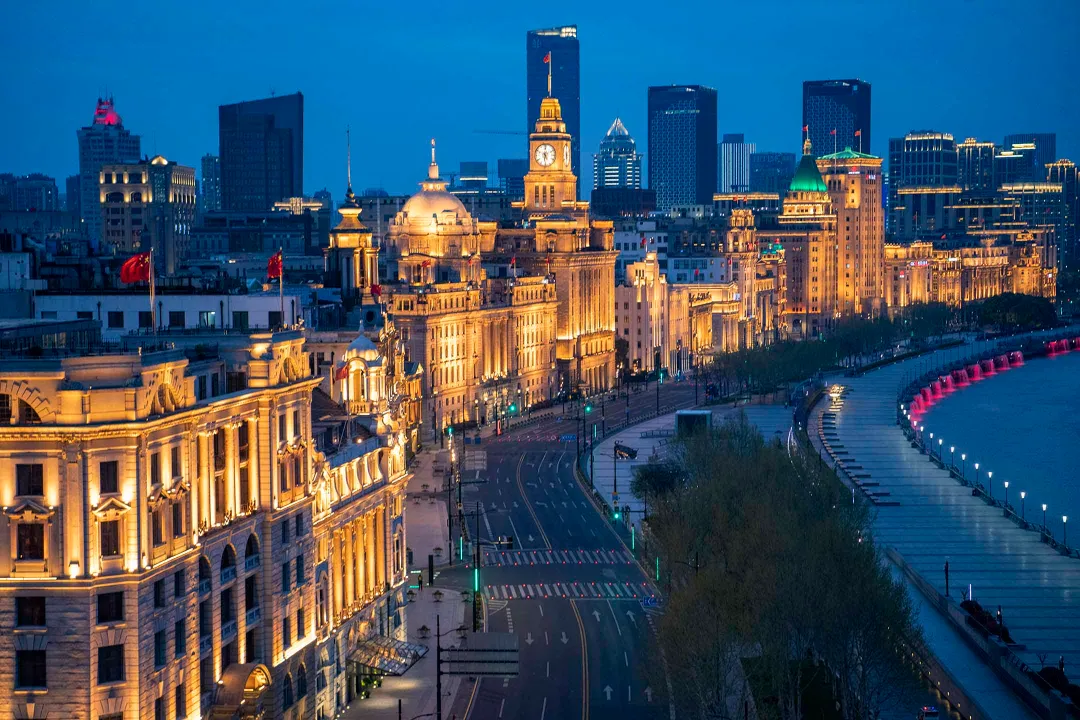
The Bund, Shanghai
Frequently Asked Questions (FAQs)
Q: Where to stay in Shanghai as a tourist?
Tourists usually love The Bund or People’s Square—easy metro access, historical buildings, and close to attractions like Yu Garden. But if you want a more “local” feel, Xintiandi or Jingan are great too. They’re central but more laid-back.
Q: Where to stay in Shanghai for first timers?
If it’s your first trip, stick to Huangpu District. It’s the safest bet. You can walk to the Bund, Nanjing Road, and hop on Metro Line 2 to basically anywhere. I once booked a hotel at East Nanjing Road Station, and didn’t need a taxi the whole week.
Q: Where to stay in Shanghai with kids?
Families usually go for Pudong. You’re close to Shanghai Disneyland, Century Park, and many hotels there have playrooms or family suites. The Kerry Hotel Pudong is a solid (though pricey) pick with kid-friendly features.
Q: Where to stay in Shanghai near Disneyland?
There’s a cluster of hotels just 1–2 metro stops from Disneyland. Look near Chuansha or Kangxin Highway Station—cheaper than staying inside Disney Resort, but still convenient. Brands like Toy Story Hotel or Courtyard by Marriott cater well to foreign guests.
Q: Where to stay in Shanghai for shopping?
Easy—West Nanjing Road or Huaihai Road. You’ll find malls, boutiques, streetwear shops, and cafés all in one walkable area. Middle Huaihai Road Station is especially good if you like local brands and creative shops.
Q: Where to stay in Shanghai reddit users recommend?
Redditors often mention French Concession, Jingan, and Suzhou Creek area for being clean, chill, and “livable” while still tourist-accessible. Many say these areas strike a balance between comfort and local vibe—not too loud, not too remote.
Where to stay in Shanghai hotel or Airbnb?
Short answer? Hotel—especially if you don’t speak Chinese. Many Airbnbs can’t legally host foreigners unless they’re properly registered. Stick with hotels listed on Trip.com or Agoda that mark “Foreigner Accepted.”
Q: What’s the best neighborhood to stay in Shanghai for first-timers?
The Bund or People’s Square are ideal if it’s your first time. You’re right in the heart of it—close to major landmarks, the metro, and riverside walks. Hotels like the Radisson Blu New World Shanghai (foreigner-friendly) are around $100–150 per night. Locals might say it's touristy, but that’s not always a bad thing when you're just getting your bearings.
Just be prepared for the crowds—especially on weekends.
Q: Is it safe to stay in neighborhoods away from the city center?
Yes, areas like Yangpu, Changning, or Minhang are generally safe and more local. If you're okay with 20–40 minutes of metro time, you’ll get better prices and a more authentic feel. I once stayed in a small boutique guesthouse in Changning—cost me under $60 a night and felt like a local. Plus, most metro stations have English signs, and staff at larger hotels are trained to help foreign guests.
Q: Are Airbnbs legal in Shanghai? Should I book one?
Technically, yes, but here’s the catch: not all Airbnbs are allowed to host foreigners due to local registration rules. Some hosts skirt the system, which might leave you in a pinch if police checks happen. To stay safe, use platforms like Tujia (途家国际) or pick foreign-registered hotels on Trip.com. If you do use Airbnb, message the host and confirm they’re licensed for foreign guests—better safe than stuck.
Q: How early should I book during busy seasons?
For Golden Week (October) or Chinese New Year, book at least 4–6 weeks in advance. Even budget hotels can triple in price, and availability disappears fast. For normal seasons, 2–3 weeks ahead is safe. Trust me, trying to book last-minute in May once left me in a dorm room above a noodle shop—not terrible, but not ideal.
